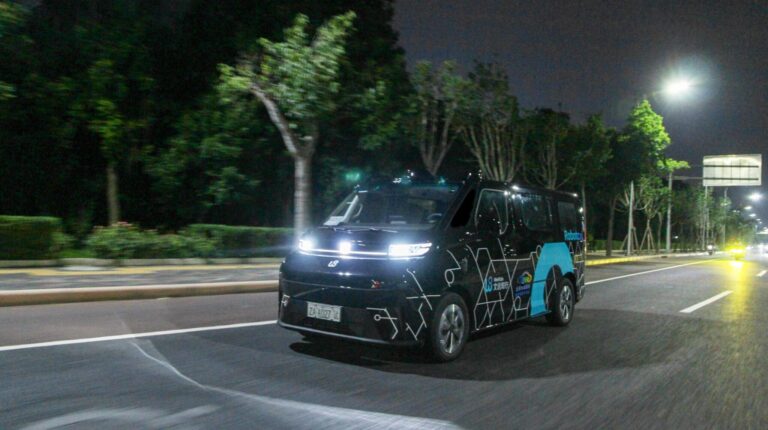WeRide has received approval to conduct late-night testing of its robotaxi on public roads within the Beijing high-level autonomous driving demonstration zone from 10pm to 7am. This milestone is a “crucial step” in building a 24/7 autonomous ride-hailing network in Beijing, the company says, and lays lays the groundwork for all-weather, all-day autonomous mobility services.
Beijing’s complex night-time road conditions, characterized by low lighting, environmental interference – heavy rain in the summer and snow in the winter – pose significant challenges for autonomous driving systems. These conditions increase the importance of maintaining effective sensor fusion between lidar and cameras under low-light conditions.
To address potential visibility issues at night, WeRide’s robotaxi is equipped with more than 20 sensors, including high-precision, high-dynamic cameras and high-line lidars across the vehicle. Combined with its multi-sensor fusion algorithm and high-performance computing platform, the system achieves 360° blind-spot-free coverage in a detection range of up to 200m.
Extreme weather conditions such as rain, dust and heavy snow pose challenges to autonomous driving stability as well. Alongside automotive-grade sensors and “stringent assembly processes”, WeRide uses self-developed smart sensor cleaning systems that detect dirt and moisture, triggering automatic cleaning.
In related news, SGS-TÜV Saar has awarded the world’s first certification for artificial intelligence (AI) safety process compliance under the new ISO/PAS 8800:2024 to Geely Auto, confirming that Geely’s safety process architecture meets the latest standard for AI systems in road vehicles. Read the full story here


